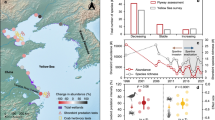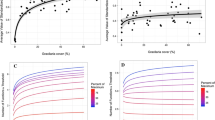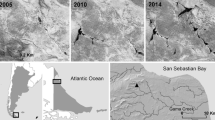Abstract.
Ecosystem engineering – the physical modification of habitats by organisms – has been proposed as an important mechanism for maintaining high species richness at the landscape scale by increasing habitat heterogeneity. Dams built by beaver (Castor canadensis) dramatically alter riparian landscapes throughout much of North America. In the central Adirondacks, New York, USA, ecosystem engineering by beaver leads to the formation of extensive wetland habitat capable of supporting herbaceous plant species not found elsewhere in the riparian zone. We show that by increasing habitat heterogeneity, beaver increase the number of species of herbaceous plants in the riparian zone by over 33% at a scale that encompasses both beaver-modified patches and patches with no history of beaver occupation. We suggest that ecosystem engineers will increase species richness at the landscape scale whenever there are species present in a landscape that are restricted to engineered habitats during at least some stages of their life cycle.
Similar content being viewed by others
Author information
Authors and Affiliations
Corresponding author
Additional information
Electronic Publication
Rights and permissions
About this article
Cite this article
Wright, J.P., Jones, C.G. & Flecker, A.S. An ecosystem engineer, the beaver, increases species richness at the landscape scale. Oecologia 132, 96–101 (2002). https://doi.org/10.1007/s00442-002-0929-1
Received:
Accepted:
Published:
Issue Date:
DOI: https://doi.org/10.1007/s00442-002-0929-1




